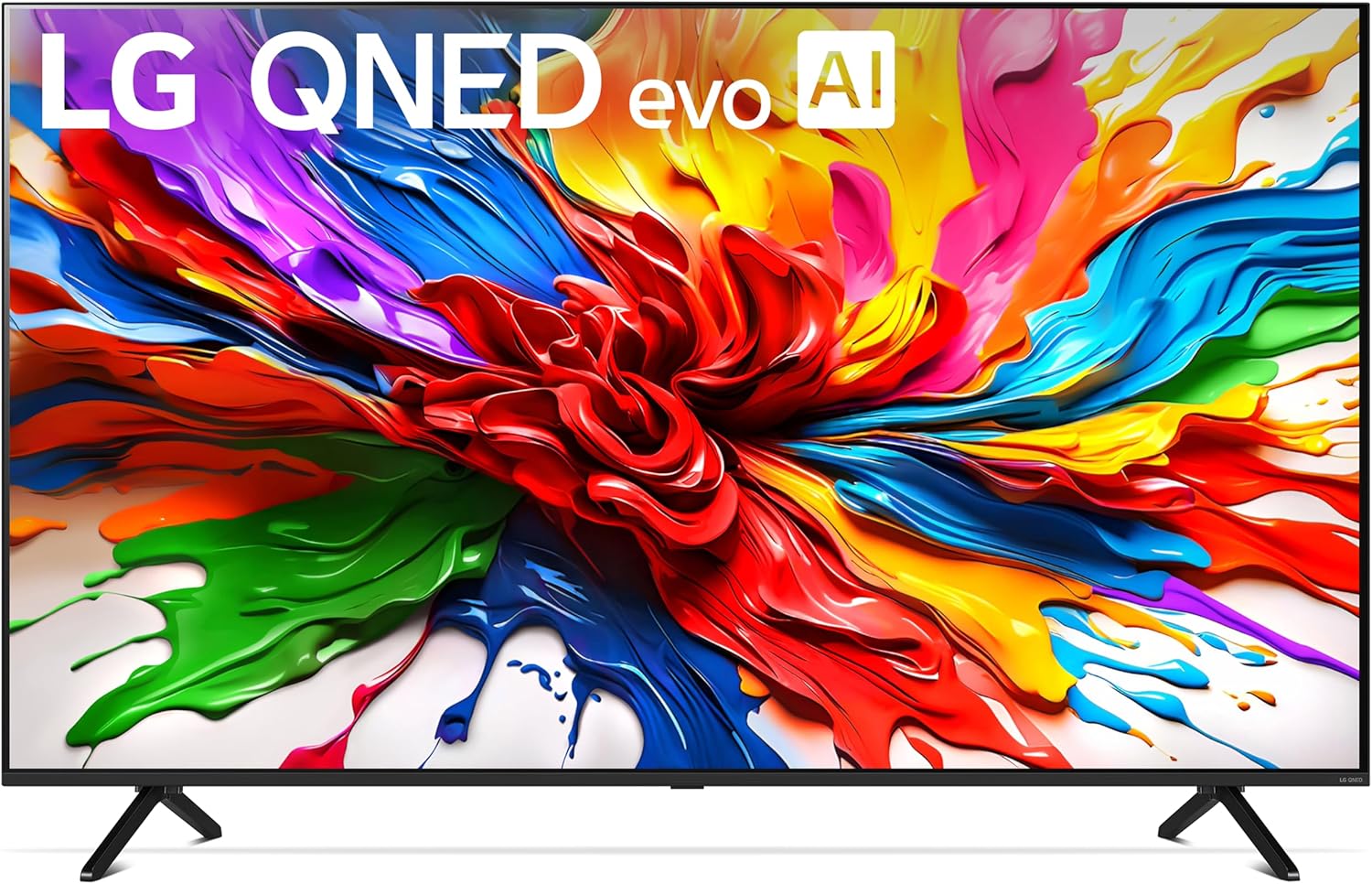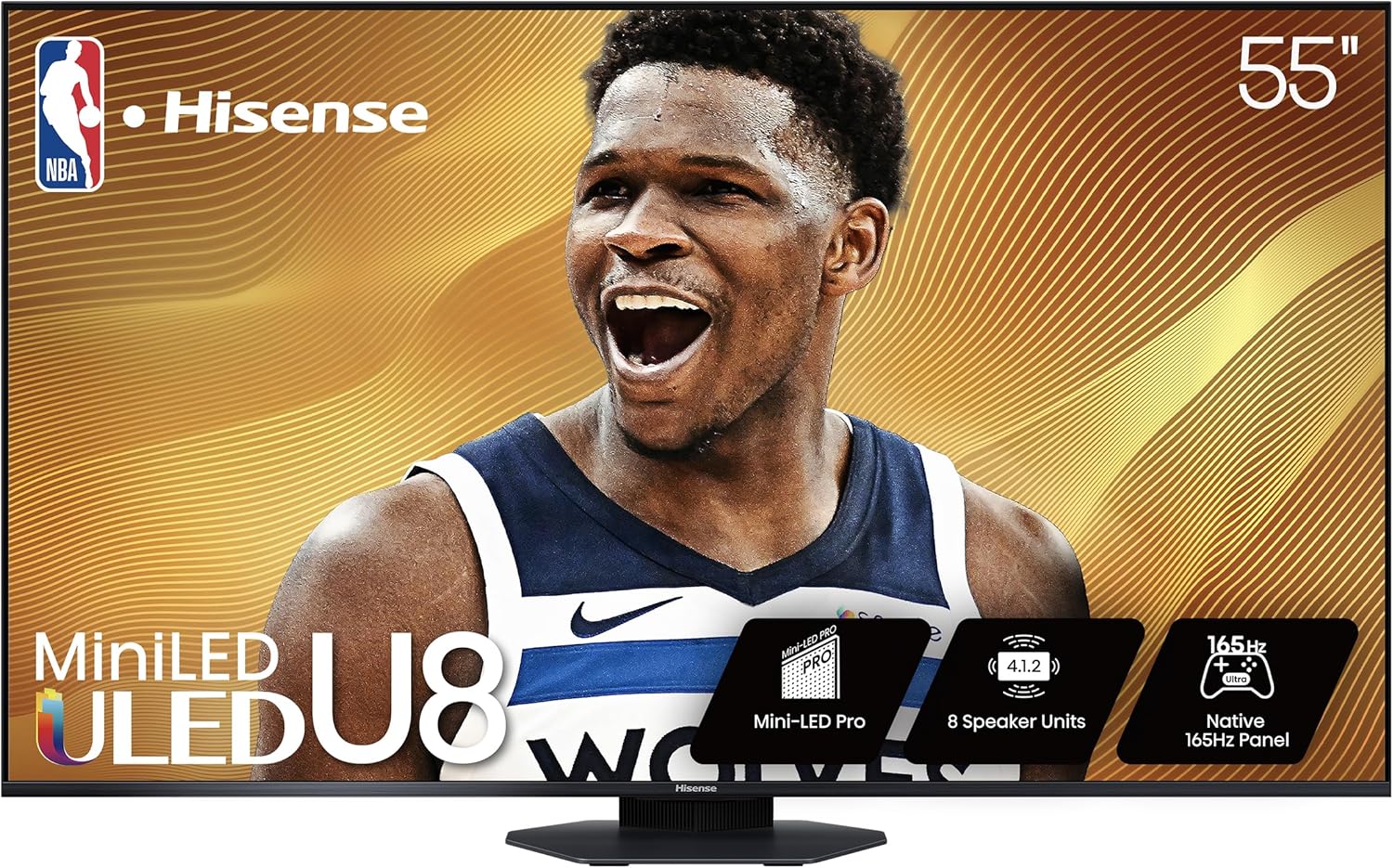Mini-LED TVs have come quite a long way over the past five years. Prices have dropped drastically since their inception and TV manufactures that solely focus on Mini-LED TVs in the US, like TCL and Hisense, have capitalized on this major success by offering lower-cost alternatives to LG, Samsung and Sony TVs.
That's where the Hisense U8QG Mini-LED TV comes in. It sits at the top of Hisense's 2025 TV lineup, sporting some of the highest brightness levels in our testing this year. It's also built on the robust Google TV smart platform and offers an incredible sound system.
Similarly, the LG QNED92 Mini-LED TV is a premium, top-of-the-line model that sports serious color accuracy, a wide selection of HDMI 2.1 ports, and some of the best motion processing. But at a current price of $1,699, is this LG 2025 flagship Mini-LED TV worth the investment when the Hisense could be had for $500 less?
I crunched the numbers, pitting the LG QNED92 vs the Hisense U8QG to see which Mini-LED TV is the better buy.
LG QNED92 vs Hisense U8QG: Specs compared
| Header Cell - Column 0 | LG QNED92 | Hisense U8QG |
|---|---|---|
Sizes | 65", 75", 85" | 55, 65", 75", 85", 100" |
Ports | 4x HDMI 2.1 | 3x HDMI 2.1, 1xx USB-C |
Resolution | 3,840 x 2,160p | 3,840 x 2,160p |
Refresh rate | 120Hz (up to 144Hz) | 165Hz |
HDR | Dolby Vision, HDR10, HLG | Dolby Vision IQ, HDR10+, HDR10, & HLG |
Smart TV software | webOS | Google TV |
ATSC 3.0 support? | No | Yes |
Processor | Alpha 8 AI Processor Gen2 | Hi-View Engine Pro processor |
LG QNED92 vs Hisense U8QG: Design
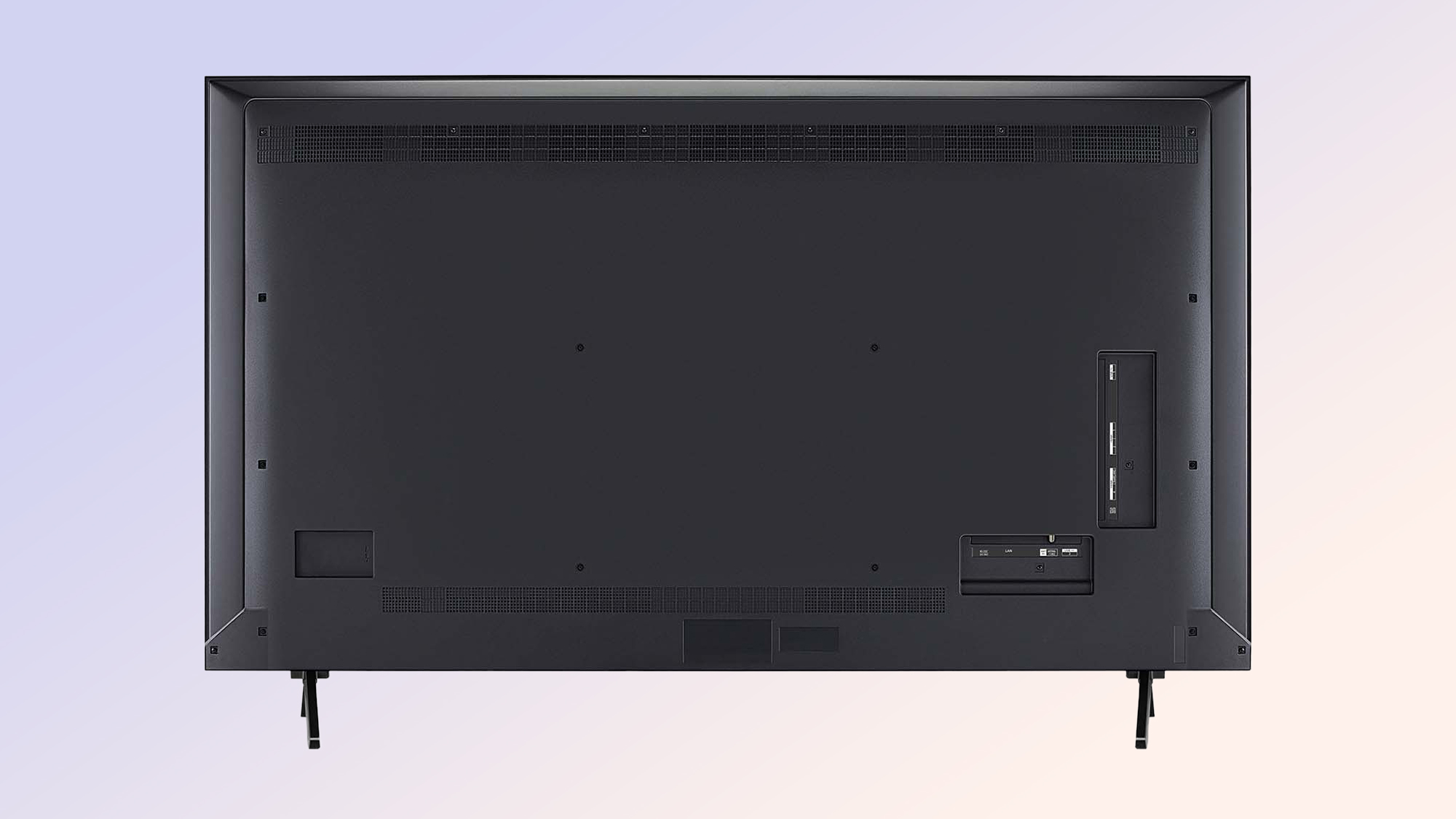
The Hisense U8QG and LG QNED92 are both QLED TVs with Mini-LED backlighting, each using a VA (Vertical Alignment) panel. This means you'll get solid contrasts on both sets, though neither will out-contrast the LG C5 OLED.
Given they're LCD TVs with big backlighting systems, both models are plenty hefty. The 65-inch Hisense U8QG weighs a little over 10 pounds more than the LG QNED92 in the same configuration, 53.4lbs vs 41.9lbs, respectively.
This weight disparity could have something to do with the larger speaker system on the U8QG: It's built with a 4.1.2-channel setup with a 72W total output, which includes side-firing and up-firing speakers in addition to a 20W subwoofer.
Get instant access to breaking news, the hottest reviews, great deals and helpful tips.
Meanwhile, the LG QNED92 with just a 2.2-channel speaker with a 40W output. This can't hold a candle up against the Hisense system, even with its Dolby Atmos support.
Another downside on the LG TV is that it comes with triangular legs as opposed to a pedestal stand, which the U8QG has. This makes it rather difficult to place on smaller entertainment stands.
Winner: Hisense U8QG
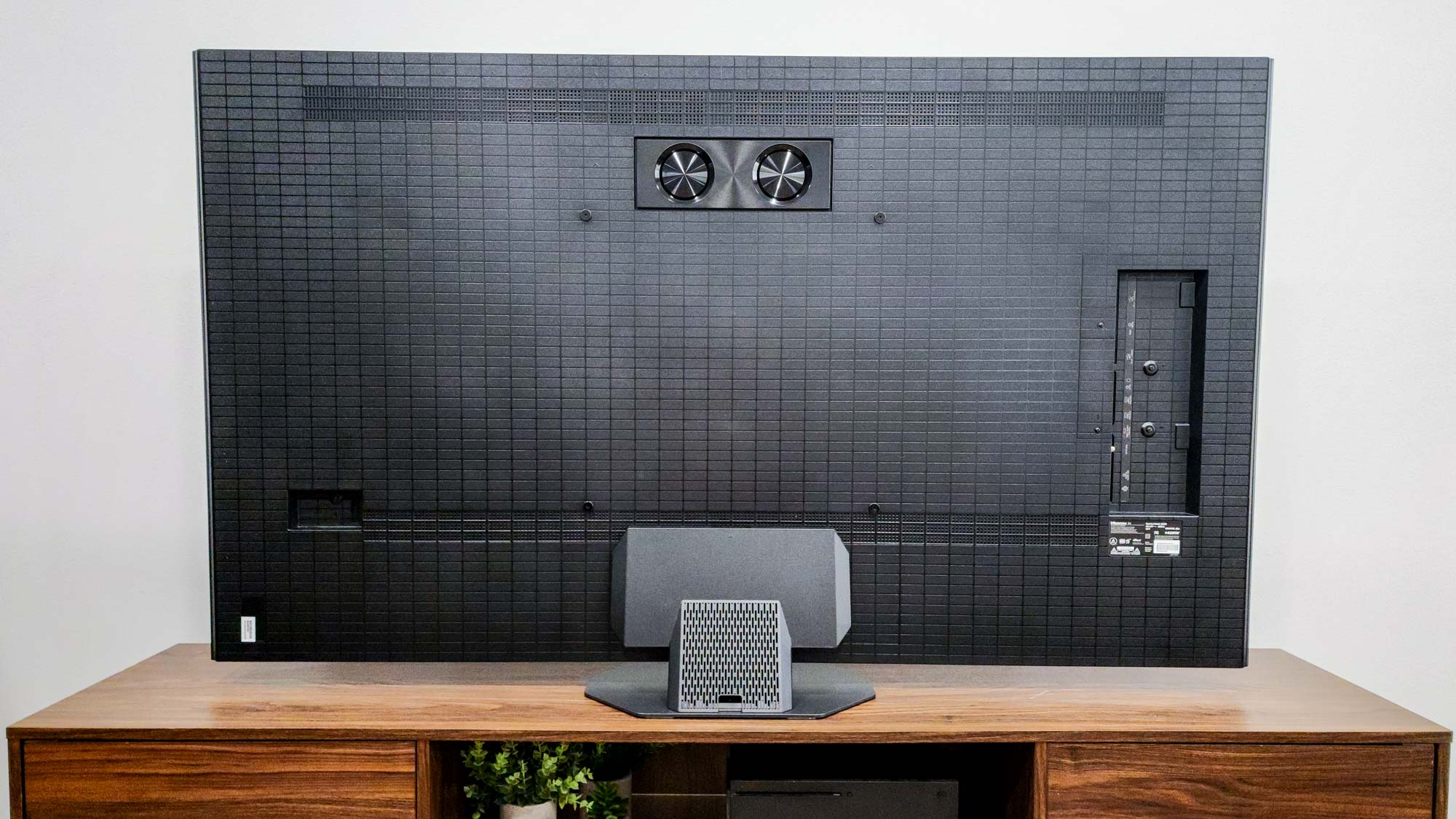
LG QNED92 vs Hisense U8QG: Ports
When it comes to ports, LG knocked it out of the park. Like its OLED lineup, LG built the QNED92 with a full set of four HDMI 2.1 ports. The Hisense U8QG has three HDMI 2.1 ports, but foregoes the fourth in favor of a USB-C video input.
Why USB-C? While practical for gamers, the concept is still a little strange to me. You'll really only get major benefits from the USB-C port if you're connecting a PC into the display, which will probably be rare in most cases.
It would be far more beneficial if Hisense had included an HDMI 2.2 port instead, giving it a leg up against other major TV brands — but we'll have to wait until next year for this specification to arrive on most displays.
Winner: LG QNED92
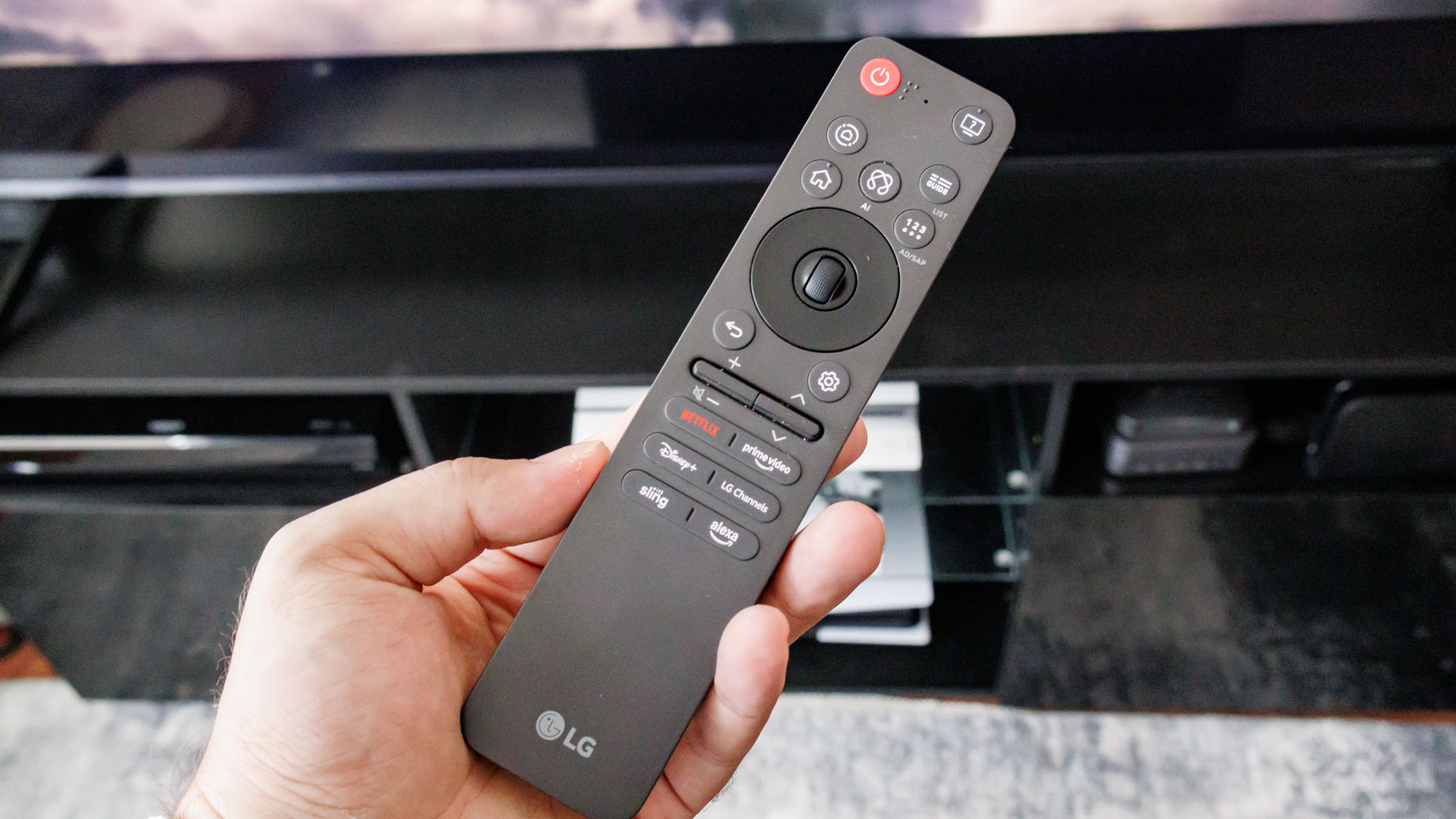
LG QNED92 vs Hisense U8QG: Remote
As I mentioned in our LG C5 OLED vs TCL QM8K faceoff, LG's re-designed remote is a welcome change, but still has its quirks. No dedicated input button makes switching between TV sources a tedious process, and its dual scroll wheel and select button are real pains.
Hisense's remote, on the other hand, is pure bliss. It comes with backlit buttons and a full array of instant access to many of the best streaming services. It could be made a bit smaller, but otherwise it fits comfortably in your palm.
Winner: Hisense U8QG
LG QNED92 vs Hisense U8QG: Performance
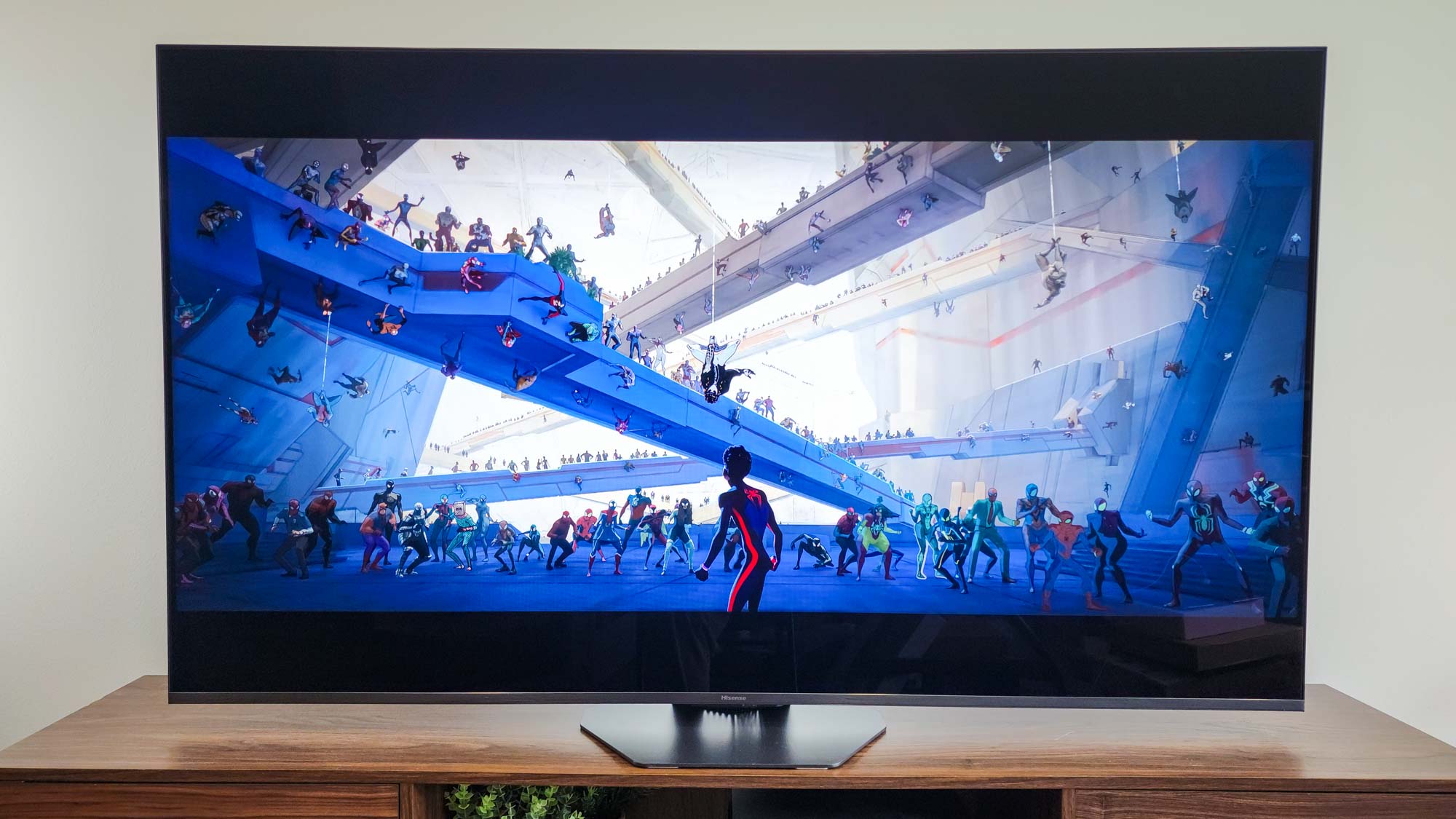
Let's take a peek at the test results of both Mini-LED TVs to see how they stack up before diving into their performance.
| Header Cell - Column 0 | LG QNED92 | Hisense U8QG |
|---|---|---|
SDR Brightness (10%, in nits) | 692 | 2,908 |
Delta-E (lower is better) | 1.5 | 2.4 |
HDR Brightness (10%, in nits) | 1,199 | 3,916 |
UHDA-P3 Gamut Coverage | 95.57% | 97.53% |
Rec. 2020 Gamut Coverage | 77.42% | 83.98% |
Input latency (milliseconds) | 13.3 | 9.7 |
The metrics here heavily favor the Hisense U8QG. As is expected, the Hisense has best-in-class brightness, spitting out nearly 3,000 nits in standard content and just under 4,000 nits in HDR.
The QNED92 is no slouch when it comes to HDR (1,199 nits in a 10% window is about what we'd expect to see from a Mini-LED TV in 2025), but the U8QG clearly is the winner here when it comes to brightness.
When it comes to color volume, the Hisense's UHDA-P3 and Rec2020 gamut coverage are slightly higher against the LG QNED92, coming out to 97.53% and 83.98%, respectively. This will translate directly to a more vibrant, colorful image.
It's not a complete sweep, though. The QNED92 does have a lower Delta-E. This metric covers color accuracy, with a lower number being better than a higher one. Unfortunately, while colors may technically be more accurate on the LG Mini-LED TV, anything under a score of 3 is largely imperceptible to the human eye.

In my testing, I found the LG QNED92 had far better anti-glare support despite it not having any anti-glare coating like the Hisense. Typically, the TV with higher luminance would be better at dealing with ambient light, but the Hisense U8QG suffered greatly in this regard, primarily in the evening when background lights in my kitchen were on.
Unfortunately, better anti-glare coating and slightly higher color accuracy aren't enough to help the the QNED92 eke out a win here. LG's top QNED just can't compete with the U8QG in the two most important performance metrics, brightness and color volume.
Winner: Hisense U8QG
LG QNED92 vs Hisense U8QG: Smart platform and features

Let's not mince words here, both TV interfaces are marred with intrusive ads that can detract from the whole experience. In a perfect world, we just wouldn't have to deal with ads on either platform.
The downside to the LG QNED92 is that it lacks an ATSC 3.0 tuner, which the Hisense U8QG is equipped with. This nets you access to NextgenTV and 4K broadcasts via an over-the-air digital antenna. That technology isn't quite ubiquitous yet, but give it a few years and it will definitely be a major boon for the Hisense U8QG.
But there is something webOS offers that Google TV doesn't: a five year upgrade path. This means LG will maintain upgrades to the software for up to five years, keeping your LG QNED92 up-to-snuff against potential security breaches.
You can argue it both ways, but I think webOS has Google TV beat right now. The LG TV interface has its own slew of free channels to dive into, cloud gaming services, and a five year upgrade path, all of which help it to stand up against Google's smart TV platform.
Winner: LG QNED92

LG QNED92 vs Hisense U8QG: Gaming

The U8QG and the QNED92 are both exceptional gaming displays. It's clear to me the Hisense U8QG leans more into the PC gaming realm due to its 165Hz refresh rate and USB-C video output, but that doesn't mean it's the de facto choice for gamers. The LG QNED makes a solid case for itself, too.
The QNED92 comes equipped with four HDMI 2.1 ports versus just the three on the U8QG. Plus, it has a sophisticated Game Optimizer, which I personally loved testing out in my review.
Although both TVs share similar gaming features, like VRR, ALLM, and AMD FreeSync Premium, what sets them apart is their input latency. The Hisense U8QG hits a low of 9.7ms while the LG QNED92 comes in at 13.3ms. While that's not a terrible number, as anything under 16ms is perfectly reasonable, input latency under 10ms offers the best gaming performance.
If you're looking for a vibrant, glare-mitigating screen to pair with your Xbox Series X or PS5 Pro, the LG QNED92 is a safe bet. If you're aiming to get the best possible results while running one of the best gaming PCs, go with the Hisense U8QG.
Winner: Tie
LG QNED92 vs Hisense U8QG: Outlook
| Header Cell - Column 0 | LG QNED92 | Hisense U8QG |
|---|---|---|
Specs (25) | 21 | 23 |
Design (25) | 22 | 24 |
Performance (25) | 21 | 24 |
Features (25) | 23 | 25 |
Total Score (100) | 87 | 96 |
Hisense is still the king of Mini-LED TVs and the U8QG offers some of the best performance metrics we've seen in our testing lab this year.
The QNED92 is no slouch in the performance department, but the proverbial nail in the QNED92's coffin is its price. Unlike the U8QG, which has arguably the best price-to-performance ratio in the Mini-LED market right now, the QNED92 is far too expensive to make it a worthwhile investment.
Taking both their prices into consideration, the Hisense U8QG is definitely the right call if you're looking to get the best possible QLED right now... but you might be better off waiting until Black Friday later this year before picking one up.
More from Tom's Guide

Ryan Epps is a Staff Writer under the TV/AV section at Tom's Guide focusing on TVs and projectors. When not researching PHOLEDs and writing about the next major innovation in the projector space, he's consuming random anime from the 90's, playing Dark Souls 3 again, or reading yet another Haruki Murakami novel.
You must confirm your public display name before commenting
Please logout and then login again, you will then be prompted to enter your display name.
